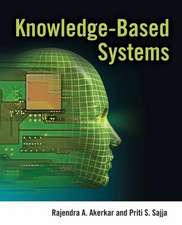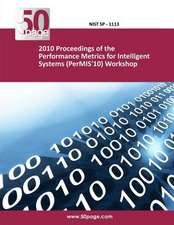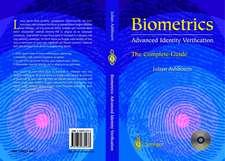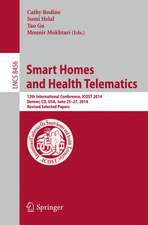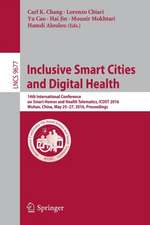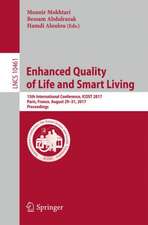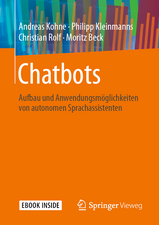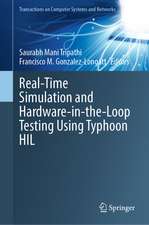Artificial Intelligence
Autor Michael Negnevitskyen Limba Engleză Paperback – 26 mai 2011
| Toate formatele și edițiile | Preț | Express |
|---|---|---|
| Paperback (2) | 446.66 lei 3-5 săpt. | +30.79 lei 6-12 zile |
| Pearson Education – 24 sep 2024 | 446.66 lei 3-5 săpt. | +30.79 lei 6-12 zile |
| Pearson Education – 26 mai 2011 | 523.72 lei 3-5 săpt. | +28.85 lei 6-12 zile |
Preț: 523.72 lei
Preț vechi: 654.65 lei
-20% Nou
Puncte Express: 786
Preț estimativ în valută:
100.21€ • 109.20$ • 84.44£
100.21€ • 109.20$ • 84.44£
Carte disponibilă
Livrare economică 03-17 aprilie
Livrare express 19-25 martie pentru 38.84 lei
Preluare comenzi: 021 569.72.76
Specificații
ISBN-13: 9781408225745
ISBN-10: 1408225743
Pagini: 504
Ilustrații: Illustrations
Dimensiuni: 156 x 235 x 30 mm
Greutate: 0.75 kg
Ediția:Nouă
Editura: Pearson Education
Locul publicării:Harlow, United Kingdom
ISBN-10: 1408225743
Pagini: 504
Ilustrații: Illustrations
Dimensiuni: 156 x 235 x 30 mm
Greutate: 0.75 kg
Ediția:Nouă
Editura: Pearson Education
Locul publicării:Harlow, United Kingdom
Cuprins
Contents
Preface xii
Newtothisedition xiii
Overviewofthebook xiv
Acknowledgements xvii
1 Introductiontoknowledge-basedintelligentsystems 1
1.1 Intelligentmachines,orwhatmachinescando 1
1.2 Thehistoryofartificialintelligence,orfromthe‘DarkAges’
toknowledge-basedsystems 4
1.3 Summary 17
Questionsforreview 21
References 22
2 Rule-basedexpertsystems 25
2.1 Introduction,orwhatisknowledge? 25
2.2 Rulesasaknowledgerepresentationtechnique 26
2.3 Themainplayersintheexpertsystemdevelopmentteam 28
2.4 Structureofarule-basedexpertsystem 30
2.5 Fundamentalcharacteristicsofanexpertsystem 33
2.6 Forwardchainingandbackwardchaininginference
techniques 35
2.7 MEDIAADVISOR:ademonstrationrule-basedexpertsystem 41
2.8 Conflictresolution 47
2.9 Advantagesanddisadvantagesofrule-basedexpertsystems 50
2.10 Summary 51
Questionsforreview 53
References 54
3 Uncertaintymanagementinrule-basedexpertsystems 55
3.1 Introduction,orwhatisuncertainty? 55
3.2 Basicprobabilitytheory 57
3.3 Bayesianreasoning 61
3.4 FORECAST:Bayesianaccumulationofevidence 65
3.5 BiasoftheBayesianmethod 72
3.6 Certaintyfactorstheoryandevidentialreasoning 74
3.7 FORECAST:anapplicationofcertaintyfactors 80
3.8 ComparisonofBayesianreasoningandcertaintyfactors 82
3.9 Summary 83
Questionsforreview 85
References 85
4 Fuzzyexpertsystems 87
4.1 Introduction,orwhatisfuzzythinking? 87
4.2 Fuzzysets 89
4.3 Linguisticvariablesandhedges 94
4.4 Operationsoffuzzysets 97
4.5 Fuzzyrules 103
4.6 Fuzzyinference 106
4.7 Buildingafuzzyexpertsystem 114
4.8 Summary 125
Questionsforreview 126
References 127
Bibliography 127
5 Frame-basedexpertsystems 131
5.1 Introduction,orwhatisaframe? 131
5.2 Framesasaknowledgerepresentationtechnique 133
5.3 Inferenceinframe-basedexperts 138
5.4 Methodsanddemons 142
5.5 Interactionofframesandrules 146
5.6 BuySmart:aframe-basedexpertsystem 149
5.7 Summary 161
Questionsforreview 163
References 163
Bibliography 164
6 Artificialneuralnetworks 165
6.1 Introduction,orhowthebrainworks 165
6.2 Theneuronasasimplecomputingelement 168
6.3 Theperceptron 170
6.4 Multilayerneuralnetworks 175
6.5 Acceleratedlearninginmultilayerneuralnetworks 185
6.6 TheHopfieldnetwork 188
6.7 Bidirectionalassociativememories 196
6.8 Self-organisingneuralnetworks 200
6.9 Summary 212
Questionsforreview 215
References 216
7 Evolutionarycomputation 219
7.1 Introduction,orcanevolutionbeintelligent? 219
7.2 Simulationofnaturalevolution 219
7.3 Geneticalgorithms 222
7.4 Whygeneticalgorithmswork 232
7.5 Casestudy:maintenanceschedulingwithgenetic
algorithms 235
7.6 Evolutionarystrategies 242
7.7 Geneticprogramming 245
7.8 Summary 254
Questionsforreview 255
References 256
Bibliography 257
8 Hybridintelligentsystems 259
8.1 Introduction,orhowtocombineGermanmechanics
withItalianlove 259
8.2 Neuralexpertsystems 261
8.3 Neuro-fuzzysystems 268
8.4 ANFIS:AdaptiveNeuro-FuzyInferenceSystem 277
8.5 Evolutionaryneuralnetworks 285
8.6 Fuzzyevolutionarysystems 290
8.7 Summary 296
Questionsforreview 297
References 298
9 Knowledgeengineering 301
9.1 Introduction,orwhatisknowledgeengineering? 301
9.2 Willanexpertsystemworkformyproblem? 308
9.3 Willafuzzyexpertsystemworkformyproblem? 317
9.4 Willaneuralnetworkworkformyproblem? 323
9.5 Willgeneticalgorithmsworkformyproblem?
9.6 Willahybridintelligentsystemworkformyproblem?
9.7 Summary
Questionsforreview
References
10 Dataminingandknowledgediscovery
10.1 Introduction,orwhatisdatamining?
10.2 Statisticalmethodsanddatavisualisation
10.3 Principalcomponentsanalysis
10.4 Relationaldatabasesanddatabasequeries
10.5 Thedatawarehouseandmultidimensionaldataanalysis
10.6 Decisiontrees
10.7 Associationrulesandmarketbasketanalysis
10.8 Summary
Questionsforreview
References
Glossary
Appendix
Index
Notă biografică
Dr Michael Negnevitsky is a Professor in Electrical Engineering and Computer Science at the University of Tasmania, Australia. The book has developed from his lectures to undergraduates. Educated as an electrical engineer, Dr Negnevitsky's many interests include artificial intelligence and soft computing. His research involves the development and application of intelligent systems in electrical engineering, process control and environmental engineering. He has authored and co-authored over 300 research publications including numerous journal articles, four patents for inventions and two books.

